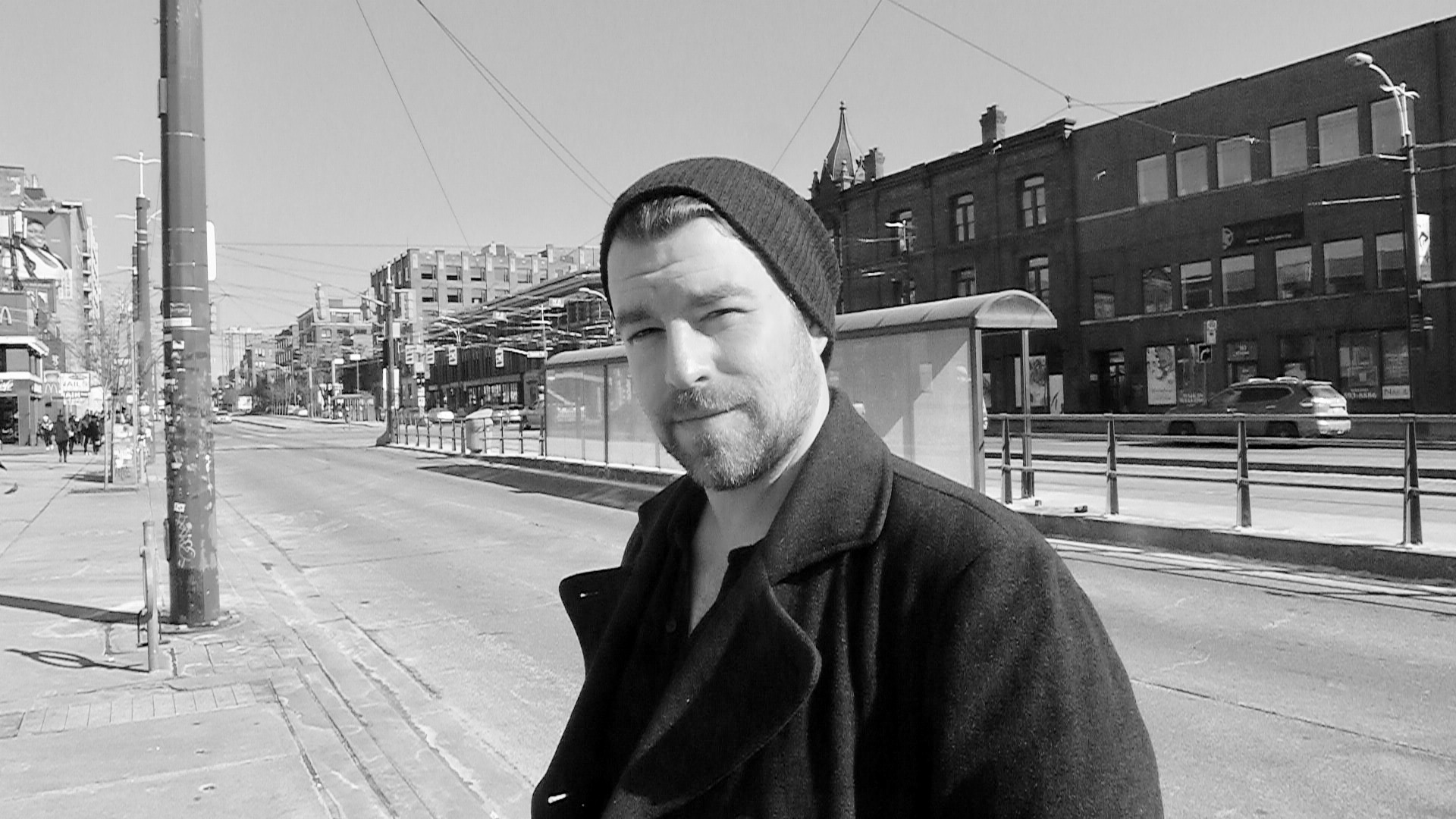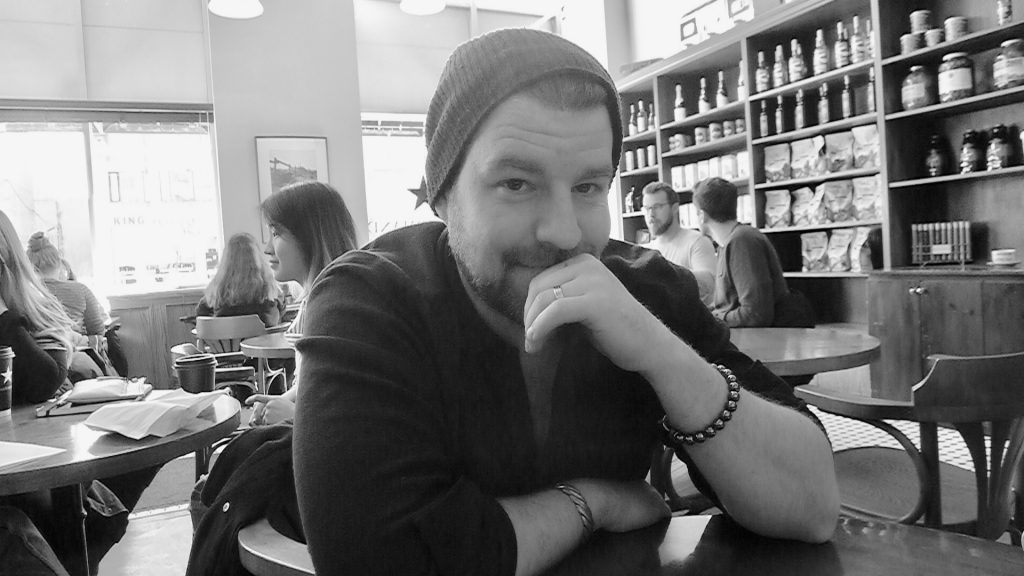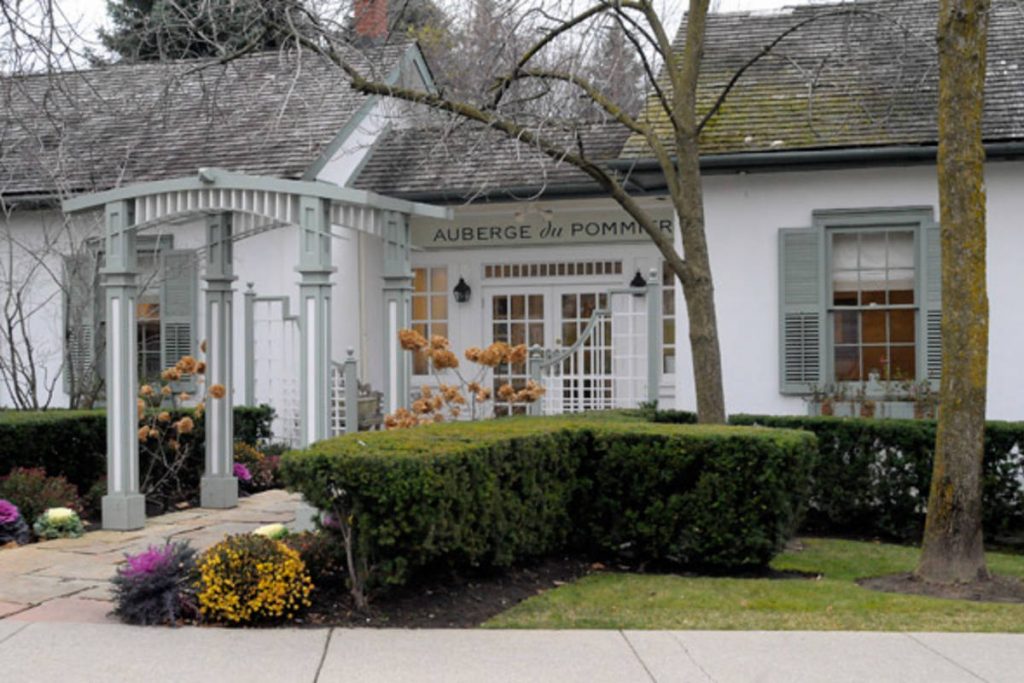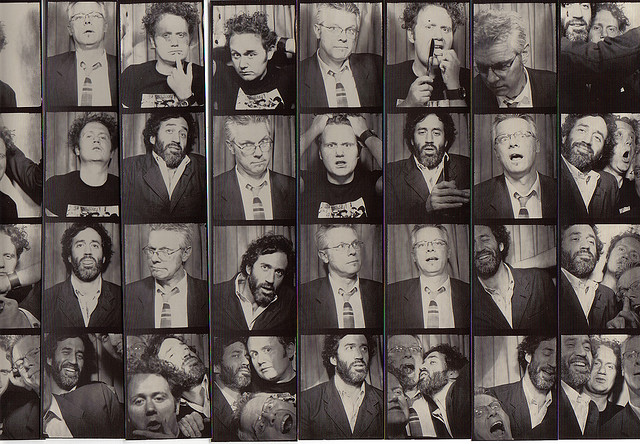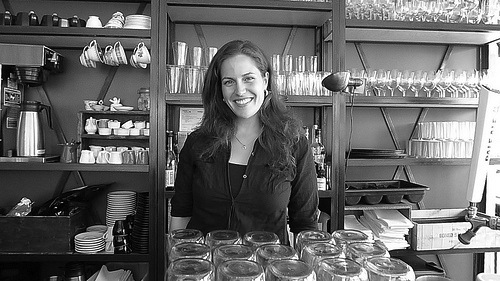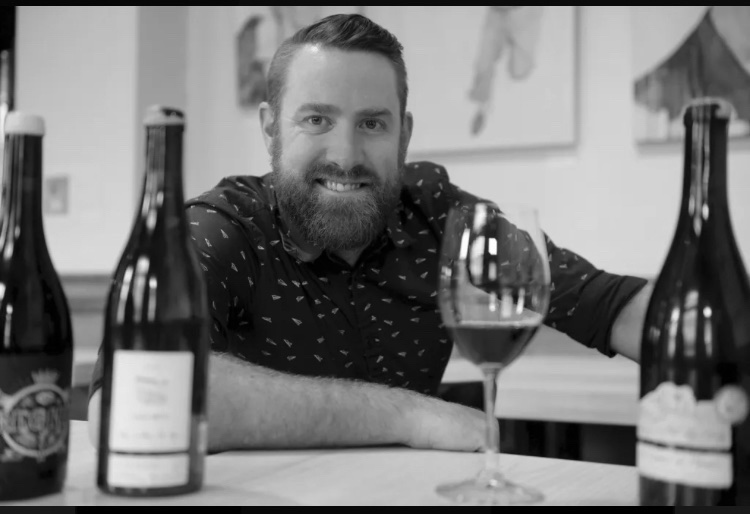In the first of an fifteenth (and wildly popular) series, we interview some of the most talented up-and-coming Sommeliers in Ontario (and occasionally from further afield). A few years back I was flicking through the pages of a locally published periodical and noticed that when it came to Sommeliers it was the same names that seemed to pop up over and over again. I was also becoming gradually cognisant of the fact that we more established wine folks were well and truly “losing our edge” to these young blood Sommeliers. Being well aware of the depth of new talent that was out there I finally decided to get together with a couple of fellow Toronto Sommelier “Old Guard” (Anton Potvin and Peter Boyd) to assemble a line of questioning that would give us an entertaining insight into the minds of these rising stars.
This month we have a chat with the rather camera shy and modest (but thoroughly wonderful) Mister Scott Zebarth.
Good Food Revolution: So Scott, what is it that you are doing these days?
Scott Zebarth: I’m doing a few things right now. I am working at an agency called Mellecey Wine Group, I consult on a few corporate wine programs, I’m helping build some private cellars, and I write articles and review wine for a company called Gargoyle.
GFR: And what kind of experience and training did you have before doing what you do today?
SZ: I kind of fell into this. I never worked in a restaurant growing up and I previously worked in the film industry. At one point I had trouble finding consistent work after a major contract finished, and was talking to a friend who was working at an Oliver & Bonacini restaurant. I only had $60 in my pocket and had no idea how I was going to make rent. She got me a job bussing tables, and some of the staff took me under their wings – mainly because I think they knew full well I had no idea what I was doing.
My first teacher was Serge Janic. He took the time to tell me everything he knew; at the time, he was completing his Sommelier Diploma. He’d meet me an hour before our shift and we’d just talk wine. I really loved it. I took the WSET classes offered through Oliver & Bonacini’s employment development, and in 2012 completed my diploma through the ISG. After that, I looked after the wine program at Auberge du Pommier, and later oversaw all the wine programs in the Trump Hotel when O&B took over as food service provider. I then moved to Icon Legacy Hospitality where I oversaw all of their wine programs.
GFR: How would you describe your role at with Mellecey right now?
SZ: It is an interesting position. I’m not a sales agent in that I don’t have clients; my role is almost like being a sommelier for an agency. I help them with business development, I help find new wines for the Ontario market, prepare educational materials on the wines for both staff and clients to use, and help find solutions wine-wise for various Mellecey clients looking to do interesting wine focused events. The owners, Cyndi and Fred, are really great people and have built an amazing portfolio. The integrity of the wines they represent is very important to them, so I am mindful that what I would like to add matches with the tone that they have set in terms of quality.
GFR: You have worked in a number different types of places… how would you say this new position (in a slightly different area) compares?
SZ: The biggest change is the hours, and that there isn’t always a brick and mortar building to report to for work. Most meetings can take place anywhere; the writing takes place in solitude, as I’m sure you’re familiar with; with Mellecey I am mobile: I go where I’m needed. After a decade of night owl hours it is quite different being up ready to go first thing in the morning. But it is still very much a position in the wine industry, including a focus on great service.
GFR: How is it working on the other side of the fence?
SZ: It is great. There are a lot of possibilities out there, and I love being able to have the opportunity to better explore those possibilities. There really is only so much you can do when you spend day in and day out in a restaurant. A little thing called ‘service’ gets in the way – which it should, considering the provision of service is why a restaurant exists in the first place.
GFR: How open do you find your accounts to trying new things when it comes to wines? Is there a specific style of wine that certain demographics crave? And just what are those demographics?
SZ: That all depends on the individual. Some people are looking for ‘the new’, and some people simply want what they like. It is no different than approaching guest that has requested to talk to the Sommelier and you feel out what they are looking for. I think it is fairly easy to suss out if the person you are dealing with is someone interested in trying something new and going on an adventure with you, or if they know what they want and just want you to point them in that direction because they aren’t familiar with the brands you offer. As far as demographics, I think it is too easy to break it down into simple categories. Something that is universal, though, is wanting great wine for the price. Value is very important to everyone.
GFR: Now, how do I word this? Have you drunk the “Natural Wine Kool Aid”? I’m just kidding, how do you feel about the scene?
SZ: I do like them. That said, just because a wine is a ‘natural wine’ doesn’t automatically mean it’s good. The same goes for organic, sustainable, and biodynamic wines. We are really just describing how they are made. I’m just one guy talking here – I don’t want trouble! Natural wines do seem to require a lot of attention to avoid the main faults that can appear in those wines. There also is a problem in my eyes of some people positioning natural wines as ‘the true way’ wine should be made, which of course is simply not the case. This kind of claim may have been to draw attention to the wine in the first place. Nevertheless, what I think is exciting about them is that when they are well made, they are very unique and that is a wonderful experience. Anyway. There is a lot of wine out there and I think people should just enjoy what they enjoy. If it’s good and you like it – awesome. If you don’t? Don’t drink that thing you don’t like.
GFR: Having worked in restaurants for so long means that you bring a lot to the table in a supplier/agent role. What makes for a good agent/supplier in your mind?
SZ: I think the ultimate goal should be a partnership. It sends the wrong message to a Sommelier when an agent walks in and they know nothing about the restaurant, and have no idea which of the wines they represent would work, so they kind of scattershot, hoping for a sale. When buying, I would always try to convey to agents exactly what the goal of the wine program was so we could find wines that would work. I am always up for trying something new and different, but when building a wine list you’re ultimately choosing and buying for your guests – they are the people who are actually going to purchase the wine. Communication is key. Availability, pricing and vintage changes, and new incoming wines are always good information to know. Be on time for meetings, and answer emails.
GFR: And what makes for a bad agent?
SZ: Bad communication, no real interest in what a Sommelier is trying to achieve with their wine program. Email guilt trips for not buying their wine are never fun to receive. General lack of professionality is also frustrating.
GFR: How do you feel about Canadian wines? Any current favourites?
SZ: I love our wines! We make world class wines in our country, which is sometimes hard to remember. In typical Canadian fashion, it seems that we need other countries to approve before we accept that something we have made is good. Favourites? I drink more Pearl Morissette and 16 Mile than any of the others, so I suppose those two would currently top my list.
GFR: What do we do well in Ontario, in your mind, and for your palate?
SZ: Riesling, Chardonnay, Pinot Noir, Gamay, and my darling Cabernet Franc. I also hear we make some nice Icewine.
GFR: And what do you feel we should give up on?
SZ: I do, but I kind of feel that if it’s your land, then it’s your rules. If a winemaker wants to make something that is their prerogative and it’s not for me to tell them otherwise.
GFR: Just as there is from everywhere in the world, there is quite a lot of dreadful wine coming from Ontario also. How do you feel about the issue of people simply promoting something because of it being local, and not because of its quality?
SZ: I think it is a very bad idea. I commend and understand the loyalty, but it doesn’t help anybody if it’s poor quality wine. There is a lot of great wine in Ontario, and there are a lot of resources to help everyone get better.
GFR: How aware of wine were you whilst growing up? Were you around wine from an early age?
SZ: I wasn’t. I come from a line of proud beer drinkers.
GFR: Can you remember your first taste of wine?
SZ: I believe I snuck a sip of sherry at a party for my grandmother when I was little. I hated it, but am happy to announce that sherry and I have made up and have quite a nice relationship going.
GFR: When do you feel children should be introduced to the wonderful world of wine?
SZ: I don’t have kids but I see nothing wrong with exposing kids to alcohol at a young age. I’d have to see the stats but in my head it seems like it would demystify it and allow for a conversation about healthy drinking habits.
GFR: When did you first decide that you would like a career in wine?… and was it with a view to being a Sommelier yourself?
SZ: I think it was probably five years into working at restaurants. If I was going to continue to work in this field, it was going to be as a Sommelier.
GFR: So who or what gave you your first insight into the world of wine?
SZ: I already mentioned Serge Janjic. Sebastien LeGoff, and Adrian Caravello were the first Sommeliers I ever worked with. They held weekly seminars where I was working that were humiliating for me at first, being in a room full of great people with a lot of knowledge while I was a total neophyte. Sebastien introduced me to Anton Potvin and Peter Bodnar, who also taught me a lot. I got to work with Ruben Elmer for a while which was very educational. I think those six are really the ones responsible for getting me into wine.
GFR: The Sommelier world is notoriously full of pretentious arseholes, and after seeing that film Somm I worry about the emergence of a new Bro culture… I’d love to hear your thoughts?
SZ: From where I’m sitting, women in the industry are outpacing the men right now. There are amazingly strong, intelligent, talented women in food and wine: sommeliers, chefs, restaurateurs, writers, agents – you name it. I also know their paths to success have been rockier than those of their male counterparts. I can say without hesitation that, based on what I’ve been told and what I’ve seen first-hand, female somms are often spoken to in a manner no guest, colleague, or client would ever dare speak to me; unfortunately, I’m convinced that in most cases this is because they are female and I am not. You’d think we’d have gotten over this by now. But for some reason, the community of somms is sometimes treated like a fraternity when it ought to be a co-ed club, and the price of admission should be the same for everyone. Anything resembling a culture of fear and exclusivity should be dispelled.
GFR: Which wine regions have you had the opportunity to visit?
SZ: Other than Ontario, I’ve visited the Okanagan Valley, Burgundy, Champagne, Alsace, Northern Italy, California, South Africa, and Switzerland. The list is growing even more this year, and I feel very lucky to have been able to travel and actually stand in the vineyards and experience these regions first hand.
GFR: Have you ever made your own wine?
SZ: I’ve only observed. I’ve taken part in blending sessions, and I have done a week here and there during harvest to learn about the process but I wouldn’t call that winemaking.
GFR: And where would you like to make wine (in a pipe dream)?
SZ: Spain or California. I feel like my personality would mesh best with those regions. There are several really interesting wines being produced in those regions, and a lot of experimentation, which I think is really exciting.
GFR: So do you prefer to manage people or bottles and why?
SZ: Depends on the day. Both can be rewarding, and both can present challenges.
GFR: What have been your career highs and lows?
SZ: Not too many lows. A few embarrassing mistakes here and there that I should have known better to avoid. This will sound silly, but I am finding that the little victories are the most satisfying. Really sharpening tasting abilities, better understanding soils, tasting an unbelievable wine for its price, seeing a guest who hates wine really fall in love with one before your eyes. I love moments like that.
GFR: Who is, in your mind, a real role model for Sommeliers?
SZ: There is a lot to being a great Sommelier – you have to be at any given time a critic, accountant, teacher, salesperson, and sometimes a manager. I think that anyone who acts professionally and willingly shares their knowledge to help make those around them better at what they do is a real role model.
GFR: And for Wine Agents?
SZ: There is a lot to being a great Wine Agent too. A Wine Agent is the eyes and ears of what is coming into market. They are like scouts – they go out and find possibilities and share what they have seen, heard, and tasted. I think the best agents have that same passion for wine that a Sommelier has, and wants to offer great wines to people. They just do it through an intermediary, whether it is through a Somm at a restaurant or the LCBO.
GFR: Do you have nightmares about working with wines? I do… regularly… and it usually involves being unable to find bottles in a cellar… and the clock is ticking away… And I haven’t been in the role for over seven years!!!
SZ:I have pretty vivid dreams. I used to have a recurring nightmare in which I was the only employee in a restaurant; the restaurant itself was a kind of composite of all the places I’ve worked merged into this giant super-sized restaurant. Opentable was down, the restaurant was full, there was a lineup of new guests trying to be seated. None of the people had faces – heads, yes, but no features. They were just faceless. They didn’t speak in words, either, just muffled angry voices. They all were tapping their fingers in unison as they waited for service. I was just running around and I couldn’t find the wine I was looking for. Dark.
GFR: Sommeliers famously have their Sundays off… What’s your idea of a perfect Sunday?
SZ: A long lingering brunch with friends, get some great ingredients from the market, and cook a cool meal to have with some great bottles.
GFR: Where are your favourite places to dine and drink.. perhaps tell us a hidden treasure of our city?
SZ: In no particular order… Le Paradis, Bar Raval, Byblos, Chabrol, Biff’s, Campagnolo, and the Oxley.
GFR: Do you cook yourself? What’s your favourite dish to cook these days?
SZ: I do! I love to cook. I don’t have a favorite, but I’ll tackle anything.
GFR: And have you had any cooking disasters recently?
SZ: A few years ago I tried a multi-course feast for family. I do not have a full kitchen staff at my disposal. Needless to say, it didn’t exactly go as planned.
GFR: Do you feel that there is a good Sommelier community in Toronto?
SZ: I do, and I feel like it is getting stronger all the time.
GFR: Do you hang about with other Sommeliers?
SZ: Sure do. I count them as some of my closest friends and always love to see and hear about what they are up to in this crazy industry.
GFR: How do you feel about Toronto as a wine and cocktail city? Where do you go if you need to get your wine or cocktail on?
SZ: I think it is good, but the main issue in Toronto is affordable access to wine. I think there are some people running great wine lists despite limitations. It is difficult getting certain unique wines into Ontario and making them affordable for purchase because the wine gets taxed so heavily, but I think we are all trying the best we can to make it happen. I’m admittedly not the best to comment on cocktail culture, but it appears to me that it’s easier to gain access and large amounts of product to allow you to run a really vibrant cocktail program if you choose.
If I’m going for a glass of wine, I would visit Josh at Archive or Courtney and Chris at Brothers. If I’m going for cocktails, I’d hit Bar Raval, Cocktail Bar, or Alo.
GFR: What would you be doing if you were not doing what you are doing today?
SZ: That is a nearly impossible question. No idea. The one thing I know is that I would be working with people, and I would need to be passionate about what I was doing.
GFR: What are your thoughts on music in restaurants?
SZ: As long as the music doesn’t take away from the food, wine and dining atmosphere, I’m cool with it.
GFR: Do you have a favourite food/wine related scene in a film/movie or show?
https://www.youtube.com/watch?v=mWucb3Estr8
SZ: “Goodfellas.” They have just killed Bill Bats, and they go to Tommy’s house to get a shovel. It’s late, but Tommy’s mom is awake and guilts them into staying and she makes them ‘something to eat’, which is a full meal. I’m not Italian, but my mom would do that.
GFR: I know that you have non-industry friends… how do they feel about what you do for a living?
SZ: They think I have one of the coolest jobs in the world, and can’t believe it is a job at all. I tend to agree.
GFR: What are your thoughts on blind tasting wine?
SZ: It has its place, but is dangerously close to a party trick.
GFR: Are you a better blind taster with or without a bad hangover? I’m definitely the former…
SZ: Without. I don’t want any wine if I am hungover.
GFR: What’s your current favourite wine region?
SZ: South Africa and Sicily.
GFR: In your mind, as a Sommelier, what is “hot” in the world of wine right now? And why?
SZ: Certainly natural wine is big. I think that wines from new regions that are a little more restrained are starting to show up on more and more people’s radars. Loire Valley, Austria, and South Africa come to mind. I think packaging will be changing so that people think of wine as a ‘universal’ beverage as opposed to a luxury product. I can see more wines in cans, and kegs. I also think that cool things are happening in Australia. I’ll be interested to see if they catch fire soon.
GFR: And what’s not so hot? What has fallen out of favour? I why do you feel that is?
SZ: I think the iconic regions of France are cost prohibitive to so many that people are turning away a bit. But the new generation of winemakers in France are doing some cool things. Very cools things that could change perceptions of French wine soon enough.
GFR: When it comes to wine is there anything that you feel is overrated?
SZ: I think that any wine with a price that can only be afforded by the 1% tends to not live up to the promise of its price tag. There are exceptions, but generally I feel this is true.
GFR: What is your favourite wine pairing right now, something nice and seasonal?
SZ: Being the winter time, I love Vacherin Mont D’Or served warm with some white wine from Jura.
GFR: Okay… three pairings with me on the spot?… this time with… the most difficult customers you would find in these kinds of Toronto establishments.
What would you suggest to pair for them wine or beverage-wise… and why?
GFR: A sophisticated spot serving elevated French cuisine, with inspired service and a sophisticated French country décor?
SZ: After a ‘welcome’ aperitif of Lillet, I’d bring something local for the appetizers. Probably either Pearl Morissette or Norm Hardie. Something that has a French connection. I’d bring a Trou Normand before the mains, just to reset things for the main courses.
If we’re talking duck or veal I’d bring a Gamay like the Domaine Sarnin-Berrux from Burgundy.
If it is beef or lamb, I’d bring something richer, like an aged Cotes de Roussillon from Clot de L’Oum. Fish dishes would get something well textured, like Domaine Huet Vouvray.
A nice Muscat Beaumes de Venise with cheese and fruit based desserts, and Banyuls with chocolate.
I’d pour a little aged Armagnac to finish the night.
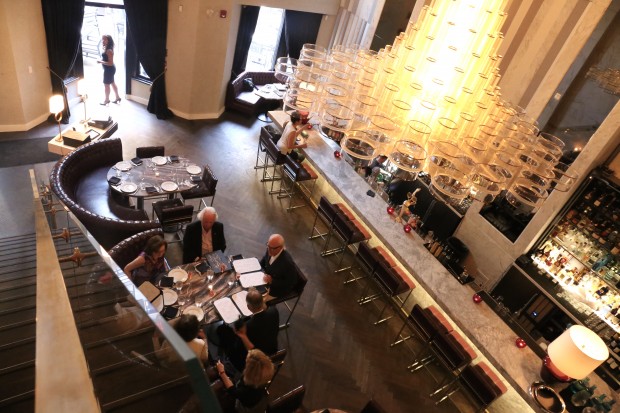
GFR: A contemporary steakhouse. An experience where inspired décor and inventive recipes blend with the highest quality dry aged cuts of meat.
SZ: Nothing too boozy to start. Maybe a lo-fi cocktail.
For mains I would bring them a nice aged Rioja, or a South African Cabernet like Kanonkop; something that still has good acidity along with the big flavours, which I always appreciate when eating a rich steak.
You really can’t go wrong with a bottle of Spottswoode Cab either.
Amaro or Bourbon to end off the rich meal.
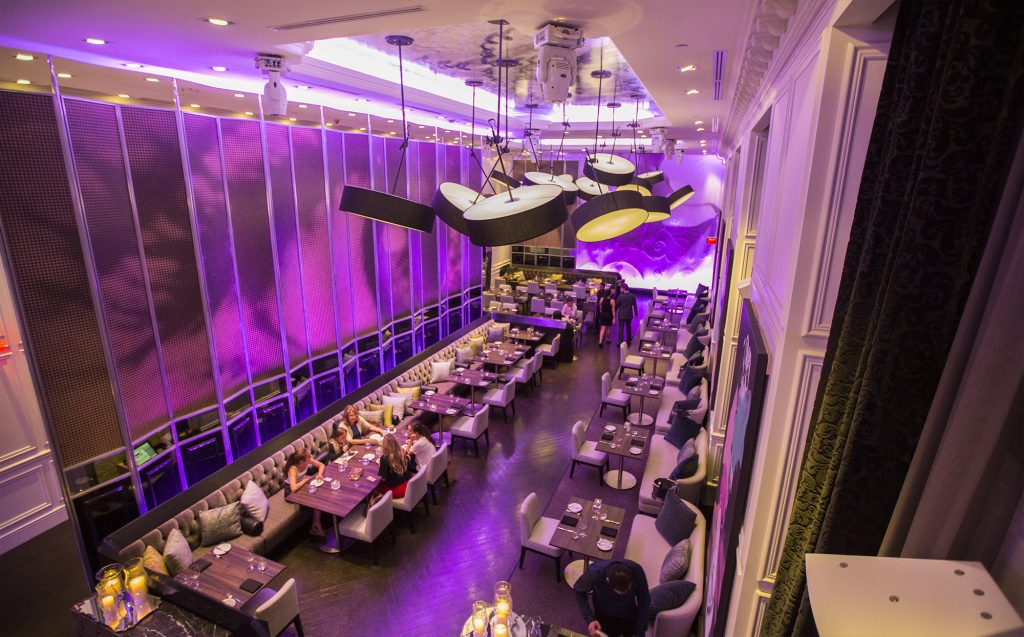
GFR: A flashy, and luxurious hotel restaurant perched on the 31st floor above the financial district?
SZ: I’d bring over a bottle of Dom Perignon, but not just any old bottle. It would be a magnum of Dom Perignon Luminous, the label would be all glowing and announcing itself loudly to the room. Impeccably dressed staff would deliver it to the table in a large ornate vintage silver wine bucket.
GFR: Do you often drink beers, ciders or spirits? What do you currently enjoy?
SZ: I tend to have ciders in the warmer months, but not too often. I always love to see what is happening in beer land. I’m a big fan of the Burdock guys – they are making some great stuff. For spirits, I tend to lean towards Bourbon.
GFR: What is your least favourite part of your job as a Sommelier?
SZ: Being a Sommelier is one of the best jobs in the world. There are some downsides like any job, but nothing really worth mentioning.
GFR: What is your weapon of choice when it comes to a corkscrew?
SZ: Classic double-hinged Waiter’s Friend.
GFR: And your thoughts on the Coravin system… has it changed the playing field?
SZ: I think it is a great tool. I inherited a Coravin system at one of the restaurants I was working in and I really loved working with it. For those who felt an Enomatic machine created a divide in the connection between the guest and the bottle, the Coravin allows you to easily pour at the table and for the guest to see and interact with the bottle. I find that you have to be careful as to how empty you allow the bottle to get, because I find that after about 75% of the wine in a bottle has been extracted it changes notably. The Coravin certainly allows for some amazing possibilities in terms of creating an interesting by the glass list.
GFR: Speaking of which, where do you stand on the screwcap vs. cork debate? And how do your customers feel about that?
SZ: I’m all for them. Sure, sure… some of the romance is gone when you’re simply cracking open a bottle by hand in a fancy setting. Admittedly, I was really happy for screwcaps on busy nights in a full restaurant. With each passing year, technology is a little better and there are screwcaps that can emulate the breathability of cork. I think it took some time for people to warm to the idea of a screwcap on what is perceived as a luxury product, but now it is common to find them.
GFR: Due to us being around alcohol, many people in our industry often have quite the increased tolerance for wine/booze, or they develop issues. What is your limit and how do you keep yourself in check?
SZ: I’m good for a couple of bottles. How do I keep myself in check? I have to know my limit and work within it. I have pretty good tolerance, but not like some of my colleagues. I can’t really afford to lose a day so I tend to make sure I’ll be functional for 8am the next morning.
GFR: Have you ever been “cut off”? If so, where and when was the most recent time?
SZ: Thankfully, no.
GFR: Speaking of which, do you have a good hangover cure?
SZ: Gatorade and Advil.
GFR: How many wines do you taste in a week?
SZ: When I was still in restaurants full time, I tasted at least 50. Now, I’d say 10-20.
GFR: When tasting with agents do you choose to spit or swallow?
SZ: I mostly spit unless it is something special and I’d regret it.
GFR: What’s your “house” wine at home?
SZ: It is always changing. I’ll buy things I’m excited about. For white I have a case of Pearce Predhomme Chenin Blanc from South Africa, and for red I have case of Hauner Hierà from Sicily.
GFR: Most remembered glass of wine ever?
SZ: In no particular order…When Howard Wasserman was doing some staff training at the first restaurant I worked in, and opened a 2002 Darioush Cabernet Sauvignon to show us what a high end Cabernet tasted like. When Bruce McAdams, still at O&B at the time, shared a sip of 1999 Sauternes with me. Never tried anything like it at that point. And a guest once brought in a 1982 Petrus to Auberge when I started serving there and let me have a bit.
GFR: What is your perfect glass (or bottle) of wine at the end of a crazy day at work?
SZ: A simple, cold, thirst quenching beer. In fact, a beer and a shower have to be up there as one of the best combination of things in life.
GFR: And now the cheesy question Scott… If you were a grape varietal which would you be? and why?
SZ: Oh, man. I’m the wrong person to ask this. I think someone else would better be able to get you an answer. I’ll give you my wife’s email address.
GFR: Thank you for taking the time Scott.
Edinburgh-born/Toronto-based Sommelier, consultant, writer, judge, and educator Jamie Drummond is the Director of Programs/Editor of Good Food Revolution.
Peter Boyd has been a part of Toronto’s wine scene for over two decades. He has taught the Diploma level for the International Sommeliers Guild, and has been the sommelier at Scaramouche Restaurant since 1993. He also writes about wine, food and pop culture and raises show molerats for fun and profit. He’s also one of the most solid guys in the business.Trust this man. Seriously… he knows his shit and is slowly taking over this city. He just celebrated his 67th birthday!
A well-known and much respected figure on the Toronto food and wine scene for almost twenty years, Potvin has worked in many of the city’s very best establishments including Biffs, Canoe, and Eau. In 2004 Potvin opened his incarnation of the Niagara Street Café, a restaurant that has gone from strength to strength year after year, with universal critical acclaim. Anton spends much of his time traveling and tasting wine and has been ranked highly in consecutive years of the International Wine Challenge. Anton is now GM at DaiLo with Chef Nick Liu.

